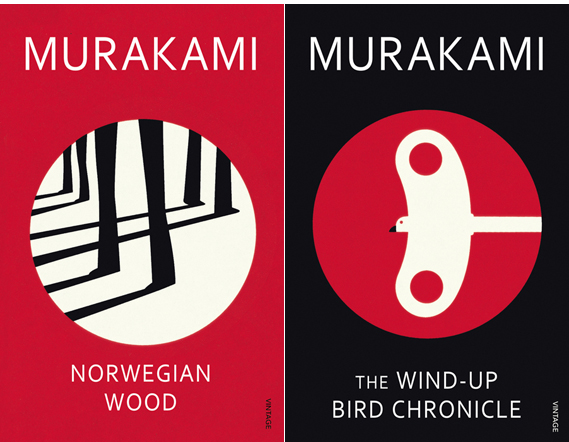Themes; after the workshop on mind-mapping out themes and ideas from single words, I decided to start mixing some of Murakami’s motifs together. I feel very much at the minute the work is becoming a little stagnant and repetitive. There are too many melancholy women that aren’t saying enough about Murakami or his work.
Further reading; I began reading some of Murakami's book 'Blind Willow, Sleeping Woman' for more inspiration; a collection of short stories to expand my familiarity with his work. While reading this I noticed that some of his stories were a little more upbeat and playful in their realms of surrealism. This gave me hope that I might be able to reflect his atmospheric writing without merely drawing sad women!
Further expansion of motifs; stepping away from melancholy women I decided to pull out some quotes from Murakami's work and illustrate them using a mixture of motifs from his books - I want to push past the obvious. However I still feel these drawings might not be saying enough. I don’t want to create just another series of portraits of Murakami’s characters, or a mismatch of aspects of his works. His novels were very revolutionary in the way they disregarded traditional Japanese culture and literature and embraced and captured the 1960s era of rebellion and free love. I want to bring this into my work but am struggling a little in terms of how I do this.
Further reading; I began reading some of Murakami's book 'Blind Willow, Sleeping Woman' for more inspiration; a collection of short stories to expand my familiarity with his work. While reading this I noticed that some of his stories were a little more upbeat and playful in their realms of surrealism. This gave me hope that I might be able to reflect his atmospheric writing without merely drawing sad women!
Further expansion of motifs; stepping away from melancholy women I decided to pull out some quotes from Murakami's work and illustrate them using a mixture of motifs from his books - I want to push past the obvious. However I still feel these drawings might not be saying enough. I don’t want to create just another series of portraits of Murakami’s characters, or a mismatch of aspects of his works. His novels were very revolutionary in the way they disregarded traditional Japanese culture and literature and embraced and captured the 1960s era of rebellion and free love. I want to bring this into my work but am struggling a little in terms of how I do this.




